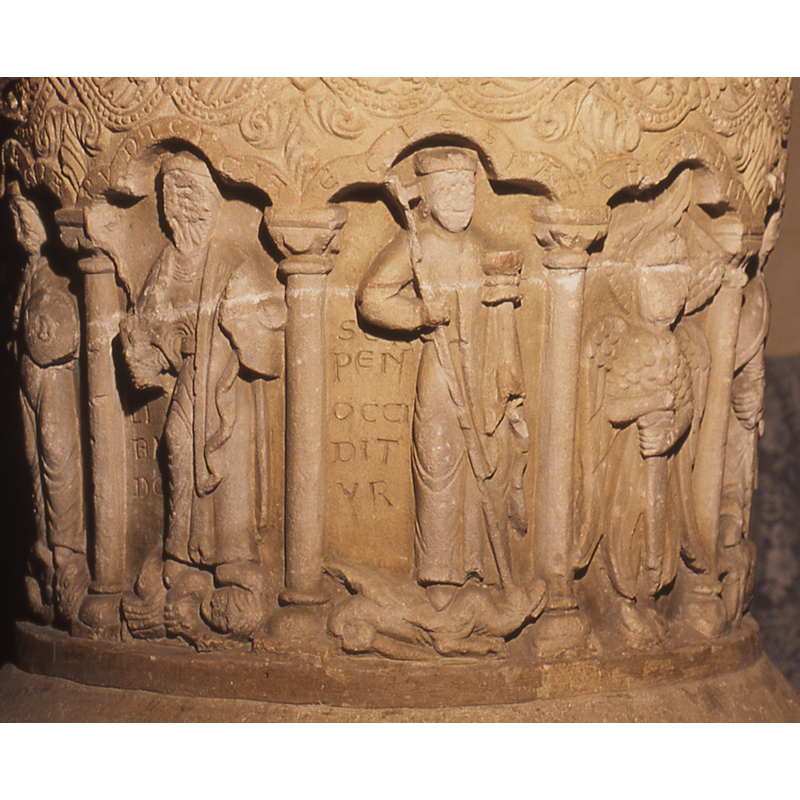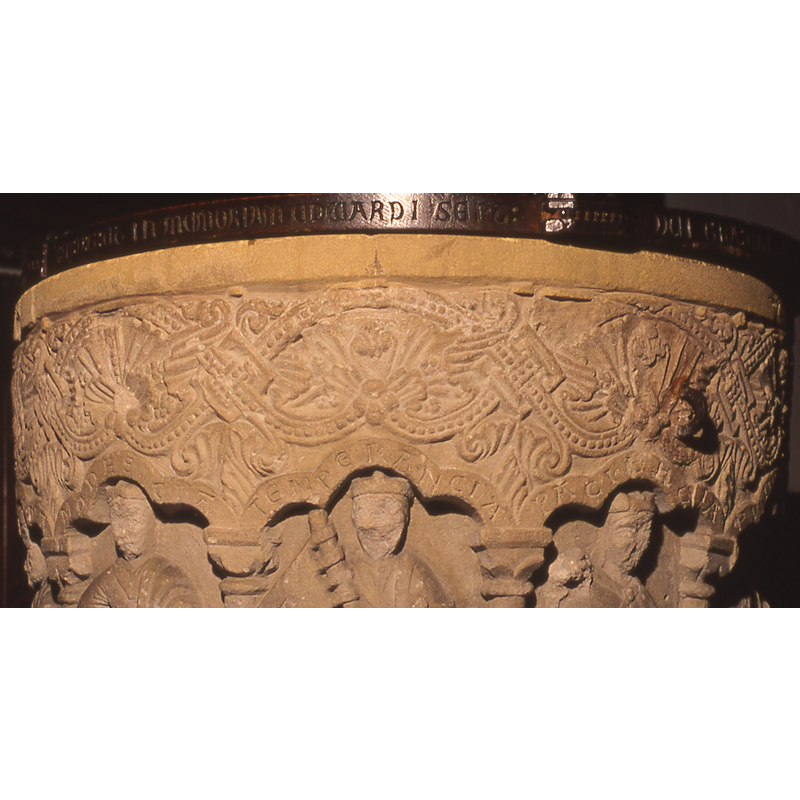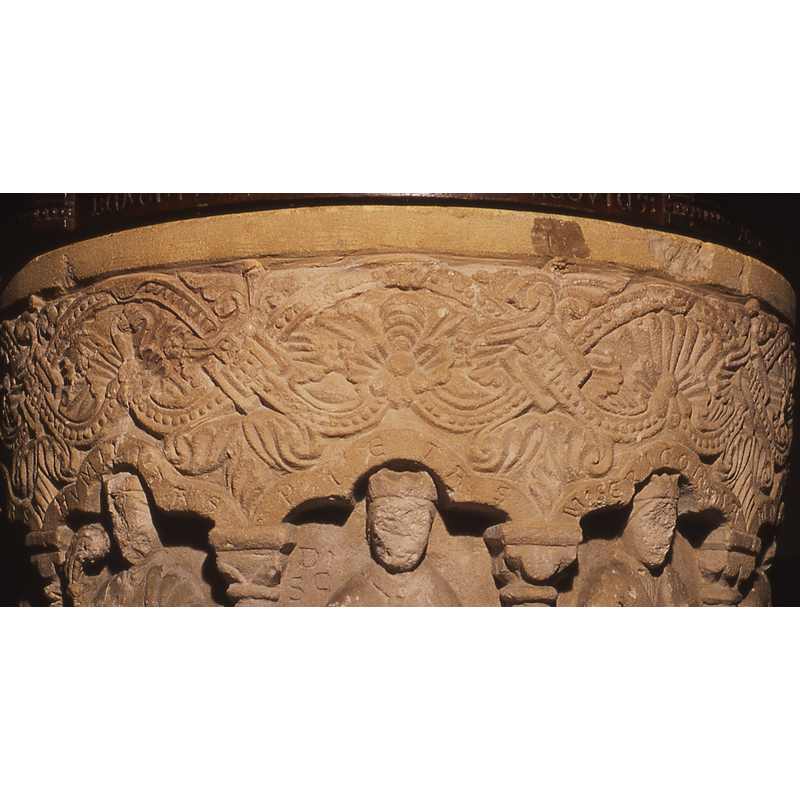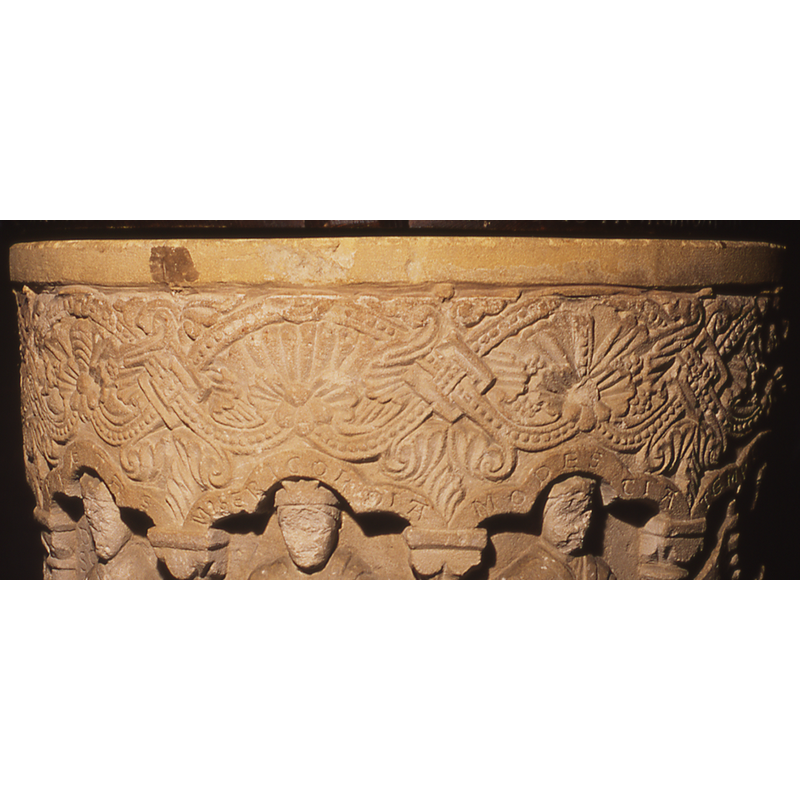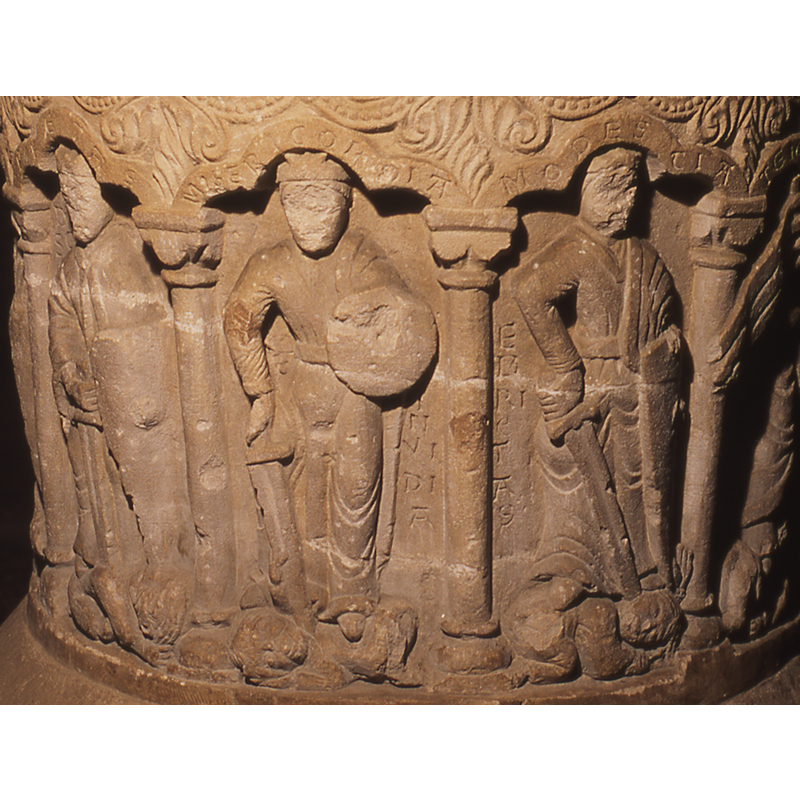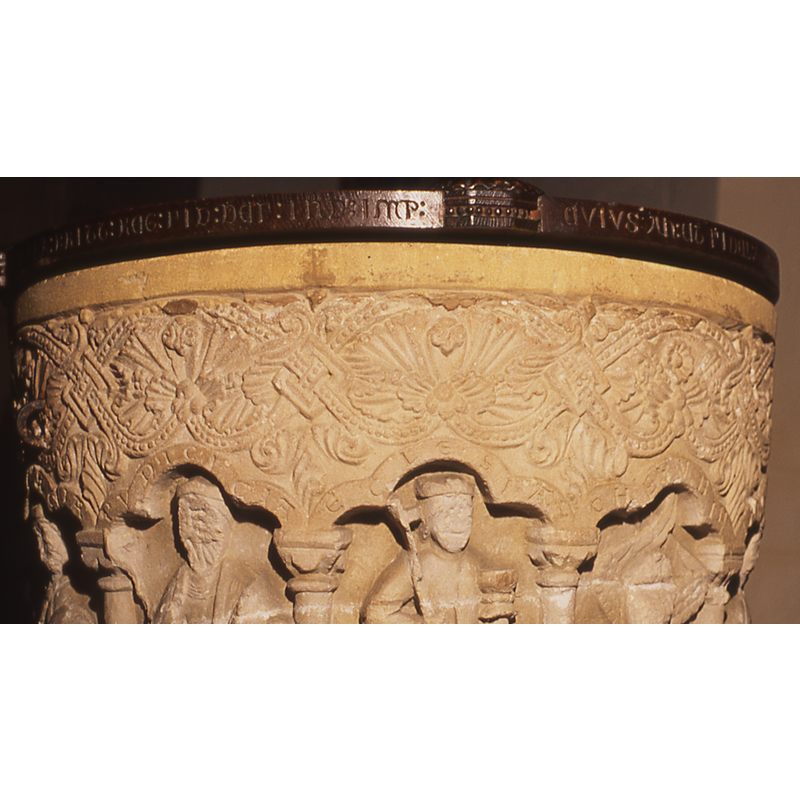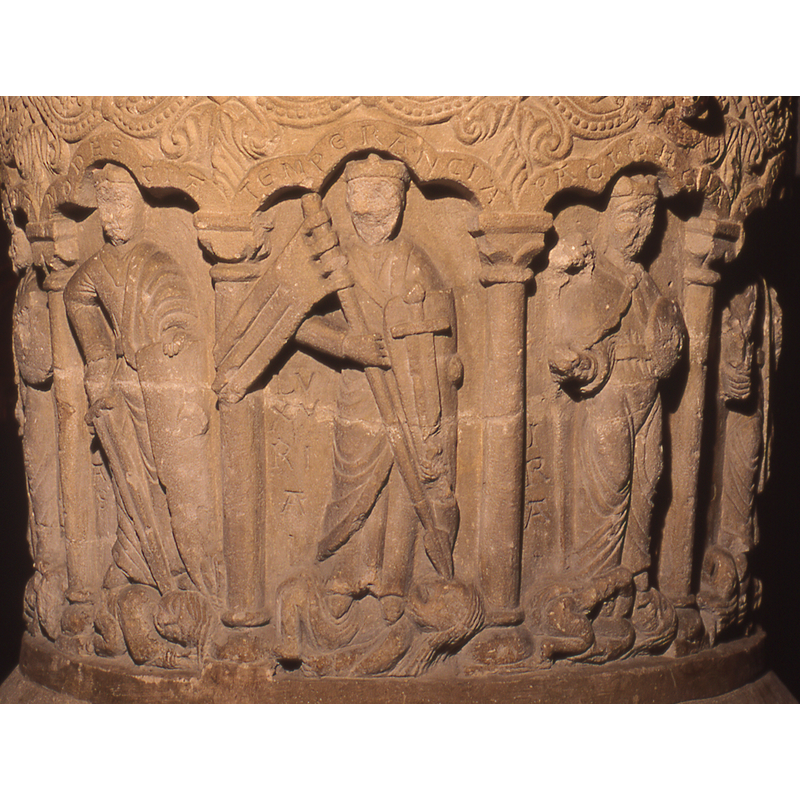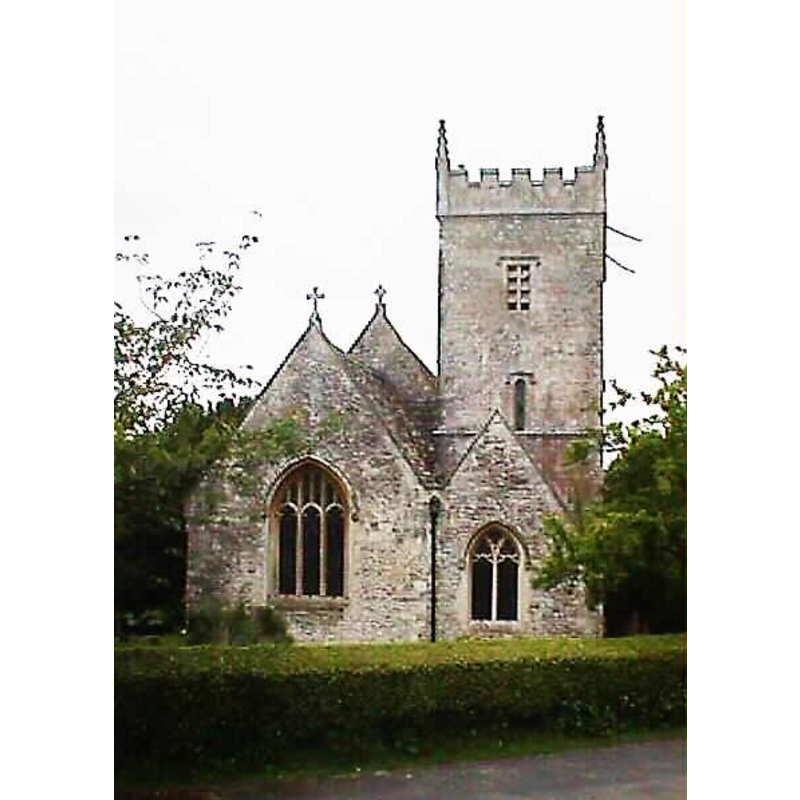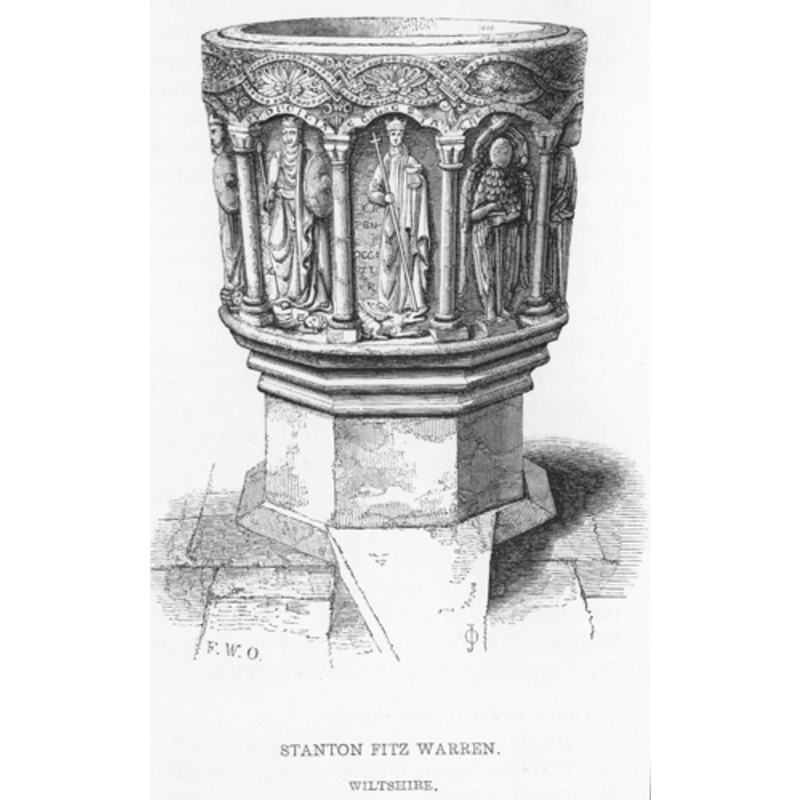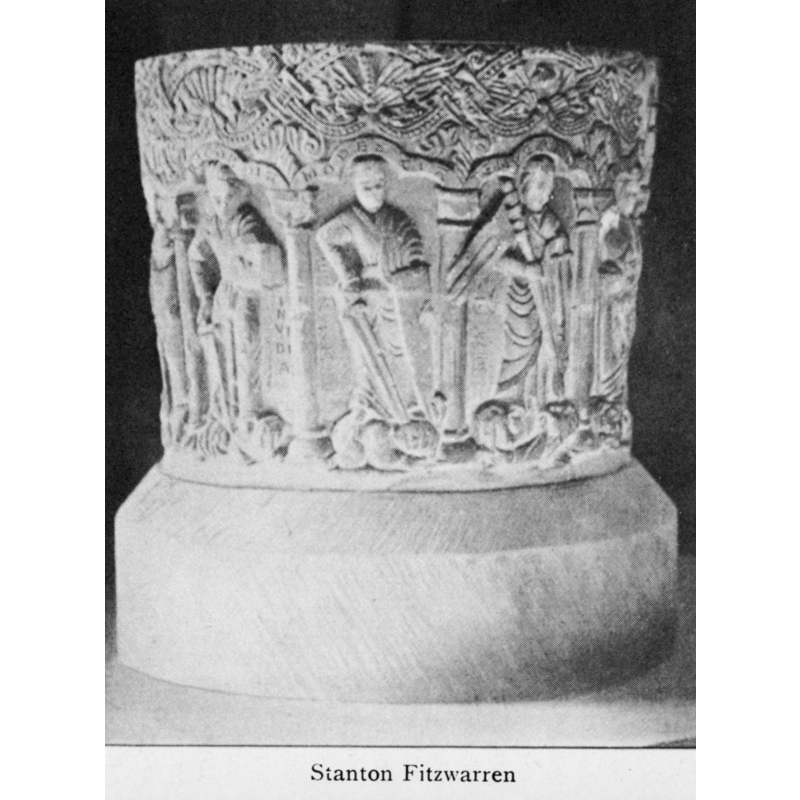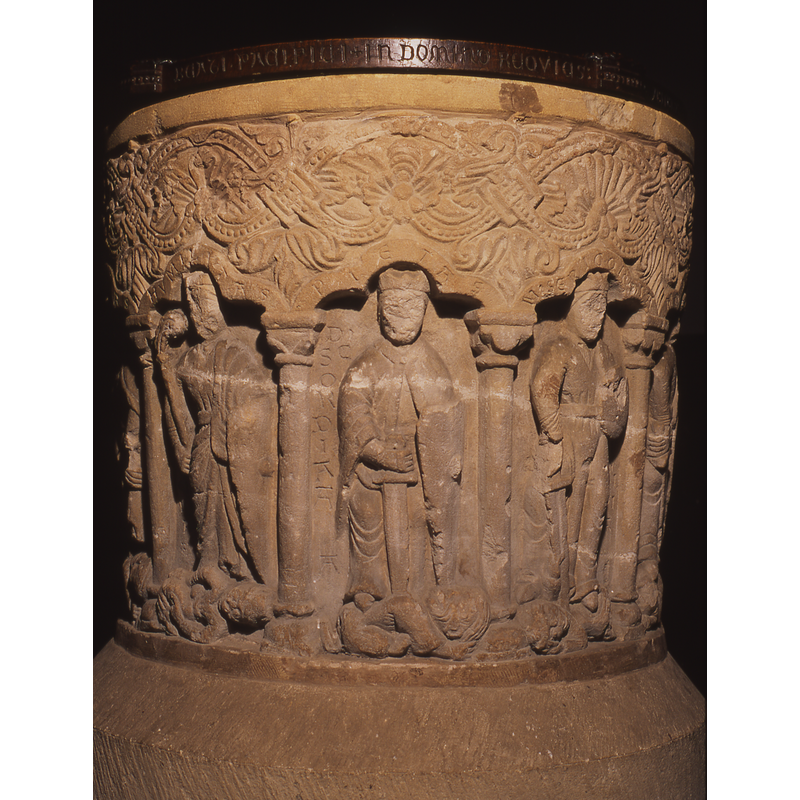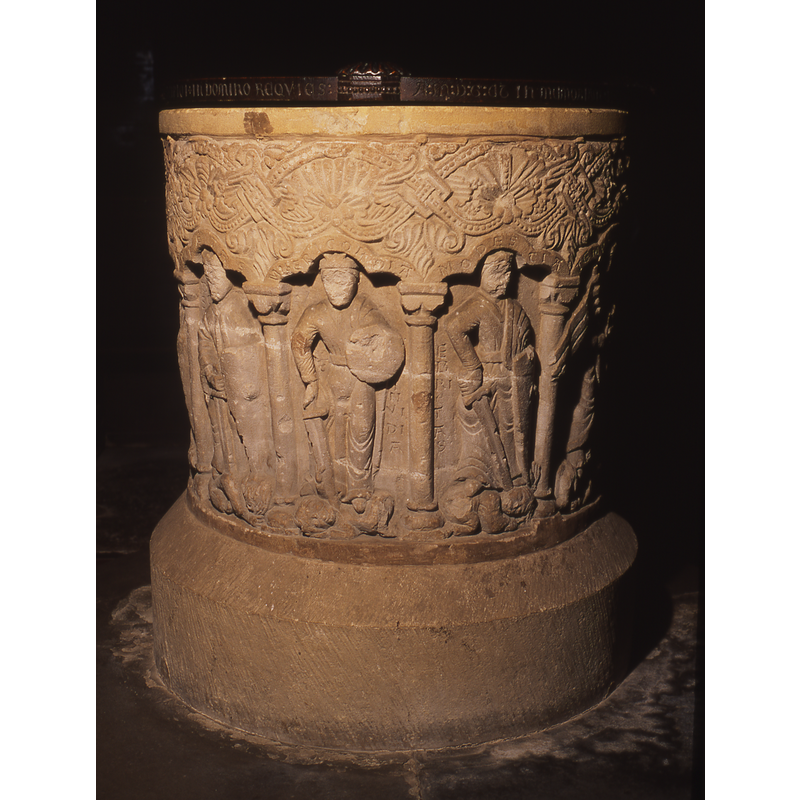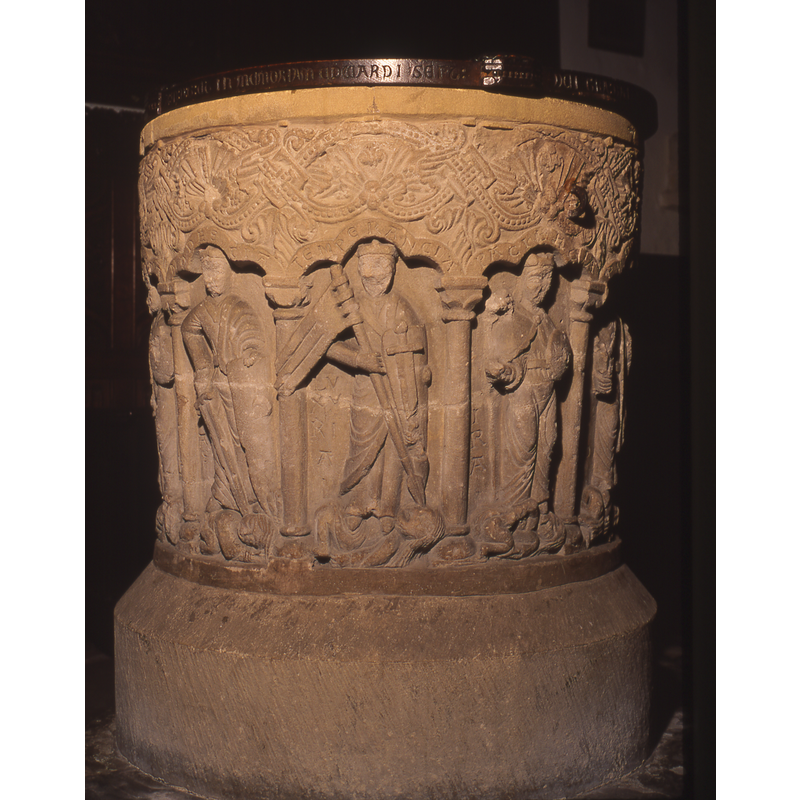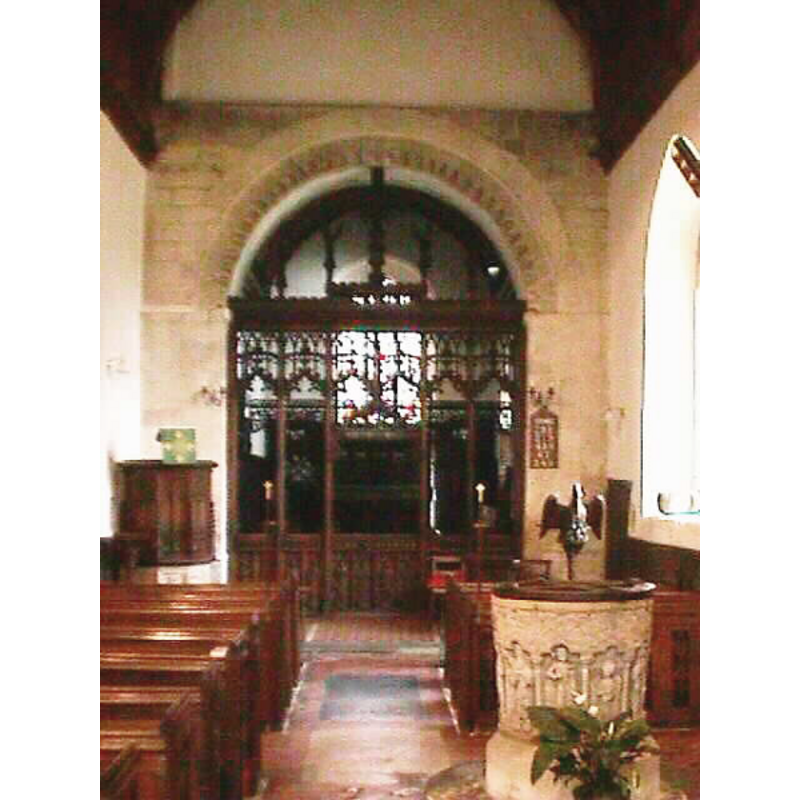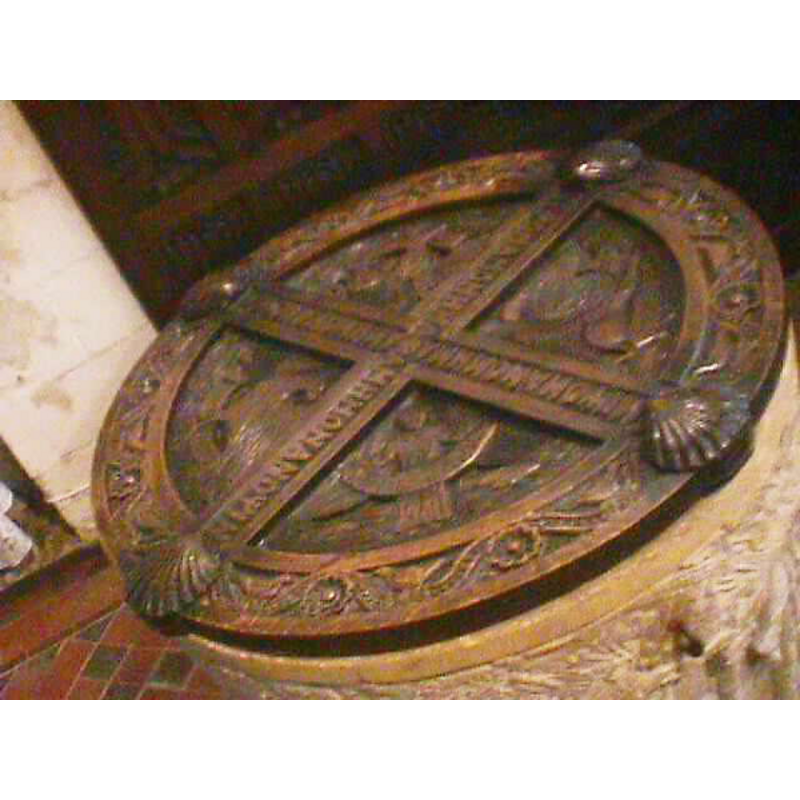Stanton Fitzwarren No. 1 / Stantone
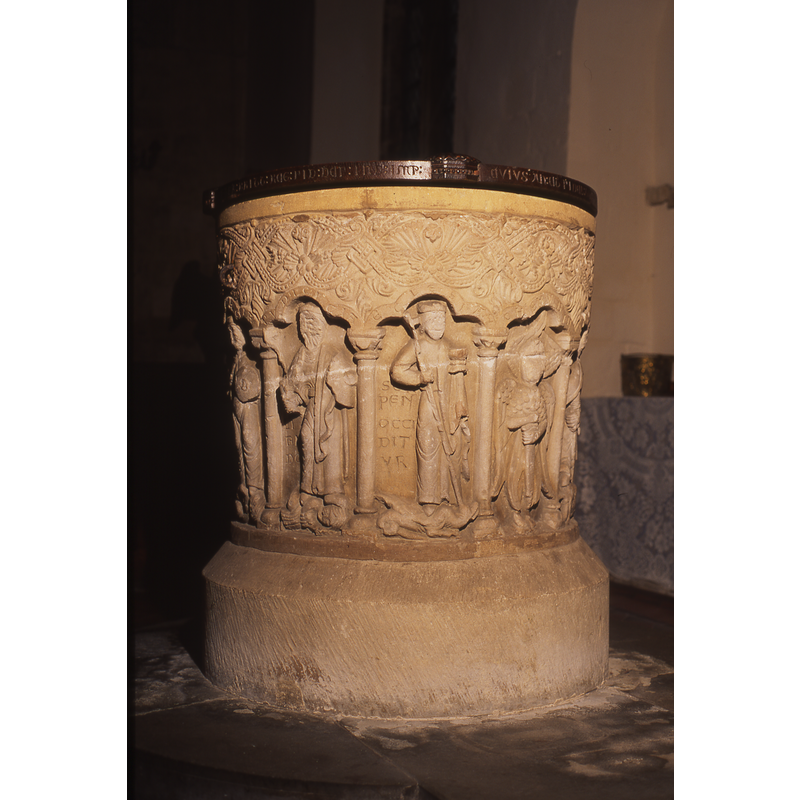
Image copyright © Baptisteria Sacra Index, 2023
Results: 29 records
B01: angel - cherub
B02: virtues and vices - Largesse vs Avarice
B03: virtues and vices - Humility vs Pride
B04: virtues and vices - Concord vs Discord
B05: virtues and vices - Charity vs Envy
B06: virtues and vices - Sobriety vs Gluttony
B07: virtues and vices - Temperance vs Lust
B08: virtues and vices - Patience vs Anger
B09: virtues and vices - Chastity vs Lust
B10: symbol - 'Ecclesia' and 'Synagoga', Church and Synagogue - Ecclesia - with a dragon
B11: design element - architectural - capital - scalloped capital - 10
B12: design element - architectural - arcade - trefoiled arches - 10
B13: inscription
B14: design element - motifs - roll moulding
BBU01: design element - patterns - interlace - palmette - beaded-tape
view of basin - detail
view of basin - detail
view of basin - detail
view of basin - detail
view of basin - detail
view of church exterior
view of font
view of font
view of font and cover
view of font and cover
view of font and cover
view of font and cover
view of font and cover in context
INFORMATION
FontID: 00237STA
Object Type: Baptismal Font1
Church/Chapel: Parish Church of St. Leonard
Church Patron Saints: St. Leonard
Church Location: Stanton Fitzwarren, Swindon SN6 7SB, United Kingdom -- Tel.: +44 1793 826505
Country Name: England
Location: Wiltshire, South West
Directions to Site: Located off (S) the B4019, 5-6 km NNE of Swindon town centre
Ecclesiastic Region: Diocese of Bristol
Historical Region: formerly Somerset / Hundred of Highworth [in Domesday]
Font Location in Church: Inside the church [cf. FontNotes]
Date: ca. 1170-1180?
Century and Period: 12th century (late?), Late Norman? / Transitional?
Cognate Fonts: The font at Southrop, in Gloucestershire, has a similar design, but the program is slightly different [cf. Index entry for Rodbourne, Wilts, for a modern replica of this font]
Font Notes:
Click to view
There is an entry foor Stanton [Fitzwarren] in the Domesday survey [https://opendomesday.org/place/SU1790/stanton-fitzwarren/] [accessed 5 January 2023] but it mentions neither cleric nor church in it. The font in this church is illustrated in a ca. 1810 watercolour by John Buckler [NB: the painting, listed as no. DZSWS:1982.717 of Wiltshire Heritage collection, is used to illustrate the title page of volume 7 of Bucklers 'Ecclesiastical Antiquities of Wiltshire' -- image not available]. Described and illustrated in Paley (1844), who dates the basin to the end of the 12th century and the base to the 14th century [NB: the base on which it stood at the time of Paley's viewing of the font, may be the one originally from the nearby church of Hannington, Wiltshire, reported as having been given to Stanton Fitzwarren [source: http://www.stmichaelshighworth.co.uk/Hannington_church.htm [accessed 21 November 2008]. Noted in the Handbook for travellers… (1869) as a Norman font. Ponting (1899) reports on a related reference from John Burton, the foreman of the works of the 1865 renovation of this church: "The font in 1865, according to John Burton's recollection did not stand on the fourteenth century base shown in the illustration of it in Paley's 'Baptismal Fonts' (1844). This seems to have been destroyed between 1844 and 1865. A new one more in harmony with the font has been lately substituted for that put up in 1865."] Noted in Bloxham (1859) as "a very rare and emblematic sculptured font of late Norman work […] inscribed." Described in Romilly Allen (1884) who remarks: "Here the church is symbolised by a crowned female figure, holding a cross in one hand and a chalice in the other, and is treading on a serpent, the inscription being 'Ecclesia Serpens occiditur'"; Romilly Allen lists the figures with the Vices and Virtues idenfied by visible inscriptions. Described and illustrated in Ponting (1899) with full notation of virtues and vices, the spelling of some of the inscriptions varying to some degree; this source also notes: "The font appears to have been cut down around the top". Described in Cox & Harvey (1907): "by far the most beautiful late Norman font in the county" [their identification of the virtues-and-vices figures matches the one in Bond - cf. infra]. Described and illustrated in Bond (1908) as a bucket-shaped beautiful and richly ornamented baptismal font of the Norman period/style. The upper area of the basin sides is covered in an intricate pattern of palmette motifs made of strands of beaded-tape; this pattern is so highly elaborated, adds Bond (ibid.) "that the font can hardly belong to the twelfth century"; the presence of a trefoil arcade lower down leads Bond to propose a date of the late-12th or early-13th century (ibid.) The ten trefoil arches are inscribed with the Latin name of the figures contained within them; under each of eight arches, a Virtue, personified with appropriate characteristics, stands or tramples on an equally identifiable Vice; the names of the vices are incised on the lower side of the panels: 1)Largitas (figure with sword) over Avaricia; 2)Humilitas (figure with club and shield) over Superbia; 3)Pietas (figure with sword and shield) over Discordia; 4)Misericordia (figure with sword and small shield) over Invidia; 5)Modestia (figure with sword and shield) over Ebrietas; 6)Temperancia (figure with banner, spear and shield) over Luxuria; 7)Paciencia (figure with sword and small shield) over Ira; 8)Pudicia (figure) over Libido; the two other arches contain: 9)Ecclesia spearing a dragon underfoot, and 10)Cherubim or Seraphim, a multi-winged figure armed with a sword. The columns of the arcade are very slender, topped with scalloped capitals, whereas the bases are ornamented with roll mouldings. Bond (ibid.) reported ca. 1908 that "the font at Staple [i.e., Stanton] Fitz-Warren [...] has been given a new rim recently. Described and illustrated in Tyrrell-Green (1928). Described and iIlustrated in Buck (1951), who dwels on the details of comparison with the font at Southrop. Buck (ibid.) comments on the cover and gives its maker: "it was carved by the late Canon Masters, Rector". Stone (1955) notes that the allegorical cycle "of the battle of Virtues and Vices, popularised in a manuscript well known to the Anglo-Saxons, the 'Psychomachia' of Prudentius", was probably the inspirational source for the iconography in the fonts at Stanton Fitzwarren and Southrop. Noted in Kaske (1968). Noted in Pevsner & Cherry (1975): "Font. An important Norman piece, circular, with eight Virtues and Vices below trefoiled arches. Above, a freeze of beaded trails and foliage […] In addition Ecclesia and the Evil One, and a Seraph with six wings. There is a similar font at Southrop, Gloucestershire". On-site notes: the early-20th century wooden font cover is, according to Mark Child's church visitor's guide [undated/unpaged] is the work of the Rev. William Caldwell Masters, the 1885 rector of the church, an enthusiast of Art Nouveau; it is covered in symbolic motifs and ornamentations and the ubiquitous Greek palindrome "NI[f]ON ANOM HMATAMH MONA NO [f]IN". This same guide informs that the font is said to have stood on an octagonal 14th-century base for 500 years, that it was removed in 1865 and that it was replaced by the present one, made by Herbert Carpenter. Child also mentions that the font "was extracted by 'potash pickle' from a generous infilling of whitewash in the early 1840's (ibid.) The basin is lead lined and has a central drain. Evidence of earlier lid hinge staples in the upper rim. [cf. Index entry for Rodbourne, nr. Swindon, Wilts., for a modern replica of this font]
COORDINATES
Church Latitude & Longitude Decimal: 51.614818, -1.748542
Church Latitude & Longitude DMS: 51° 36′ 53.35″ N, 1° 44′ 54.75″ W
UTM: 30U 586647 5718940
MEDIUM AND MEASUREMENTS
Material: stone, marble?
Font Shape: bucket-shaped (mounted)
Basin Interior Shape: round
Basin Exterior Shape: round
Drainage Notes: lead-lined
Rim Thickness: 10-12 cm
Diameter (inside rim): 61 cm
Diameter (includes rim): 83.5 cm [*] [82.5 cm**]
Basin Depth: 34 cm [35 cm**]
Height of Basin Side: 68 cm
Basin Total Height: 68 cm [62.5 cm**]
Height of Base: 29 cm
Font Height (less Plinth): 97 cm [90 cm**] [includes modern lower base]
Font Height (with Plinth): 112 cm (15 cm for plinth)
Notes on Measurements: BSI on-site [* 2ft. 9in. in Ponting (1899)] -- ** [in inches in Buck (1951)]
INSCRIPTION
Inscription Language: Latin
Inscription Notes: Names of the Virtues and Vices
Inscription Location: next to the figures
Inscription Text: "LARGITAS-AVARITIA -- HUMILITAS-SUPERBIA -- PIETAS-DISCORDIA -- MISERICORDIA-INVIDIA -- MODESTIA-EBRIETAS -- TEMPERANCIA-LUXURIA -- PACIENCIA-IRA -- PUDICIA-LIBIDO". Also: "ECLESIA -- SERPENS OCCIDITUR -- CHERUBIM"
Inscription Source: Paley (1844: unpaged); Romilly Allen (1884: 421); Ponting (1899: 183) [with variant spellings]; Cox (1907: 177); Bond (1985 c1908: 179, 181); on-site
LID INFORMATION
Date: late-19th or early 20th century / Art Nouveau
Material: wood
Apparatus: no
Notes: [cf. FontNotes]
REFERENCES
Allen, J. Romilly, "Notes on Early Christian Symbolism", N.S., VI, Proceedings of the Society of Antiquaries of Scotland, 1884, pp. 380-464; p. 431
Allen, J. Romilly, "On the Antiquity of Fonts in Great Britain", XLIV, Journal of the British Archaeological Association, 1888, pp. 164-173; p. 169
Anderson, M.D., The Imagery of British churches, London: John Murray, 1955
Bloxam, Matthew Holbeche, The Principles of Gothic ecclesiastical architecture, with an explanation of technical terms […], London: W. Kent, 1859
Bond, Francis, Fonts and Font Covers, London: Waterstone, 1985 c1908
Buck, A.G. Randle, "Some Wiltshire fonts. Part II", LIV, CXCIV (June 1951), The Wiltshire Archaeological and Natural History Magazine, 1951, pp. 19-35; p. 25, 26-28 and pl. III.27, 28
Child, Mark, A Visitor's Guide to the Parish Chruch of St Leonard, Stanton Fitzwarren, Wiltshire, [s.l.]: [s.n.], 19??
Clapham, Alfred William, English Romanesque Architecture after the Conquest, Oxford: Clarendon Press, 1934
Clapham, Alfred William, English Romanesque Architecture before the Conquest, Oxford: Clarendon Press, 1930
Cox, John Charles, English Church Furniture, New York: E.P. Dutton & Co., 1907
Cox, John Charles, Nottinghamshire, London: Allen, 1912
Davies, J.G., The Architectural Setting of Baptism, London: Barrie and Rockliff, 1962
Didron, Ainé, "Bronzes et orfévrerie du Moyen Age", 19, Annales archéologiques, 1859, pp. 5-221; p. 188 fn3
Kaske, R. E., "Piers Plowman and local iconography", XXXI, Journal of the Warburg and Courtauld Institutes, 1968, pp. 159-169; pls. 59-61; p. 162
Kaske, R.E., "Piers Plowman and local iconography: the Font at Eardisley, Herefordshire", LI, Journal of the Warburg and Courtauld Institutes, 1988, pp. 184-186, 3 ill.; p. 184
Murray, John, A handbook for travellers in Wiltshire, Dorsetshire, and Somersetshire, London: John Murray, 1869
Paley, Frederick Apthorp, Illustrations of Baptismal Fonts, London, UK: John van Voorst, 1844
Ponting, C.E., "Notes on churches visited in 1898", XXX, XCI, The Wiltshire Archaeological and Natural History Magazine, 1899, pp. 169-197; p. 182-183, 186
Stone, Lawrence, Sculpture in Britain: the Middle Ages, Harmondsworth: Penguin Books, 1955
Tasker, Edward G., Encyclopedia of Medieval Church Art, London: B.T. Batsford, 1993
Tyrrell-Green, E., Baptismal Fonts Classified and Illustrated, London: Society for Promoting Christian Knowledge: The Macmillan Co., 1928
![bears inscription: CHERUBIM[/N]](/static-50478a99ec6f36a15d6234548c59f63da52304e5/compressed/1061119017_compressed.png)
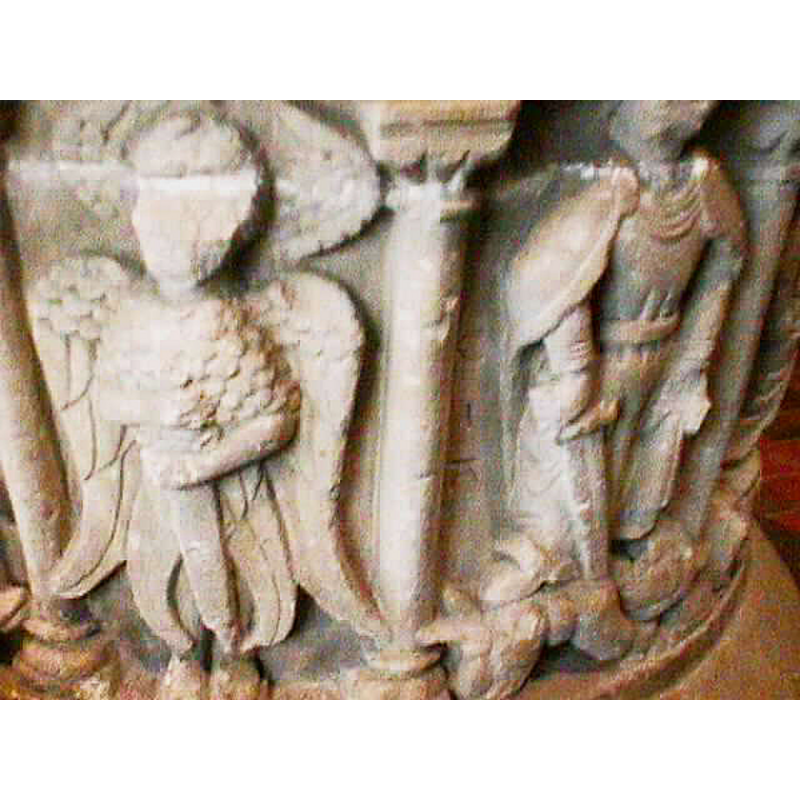
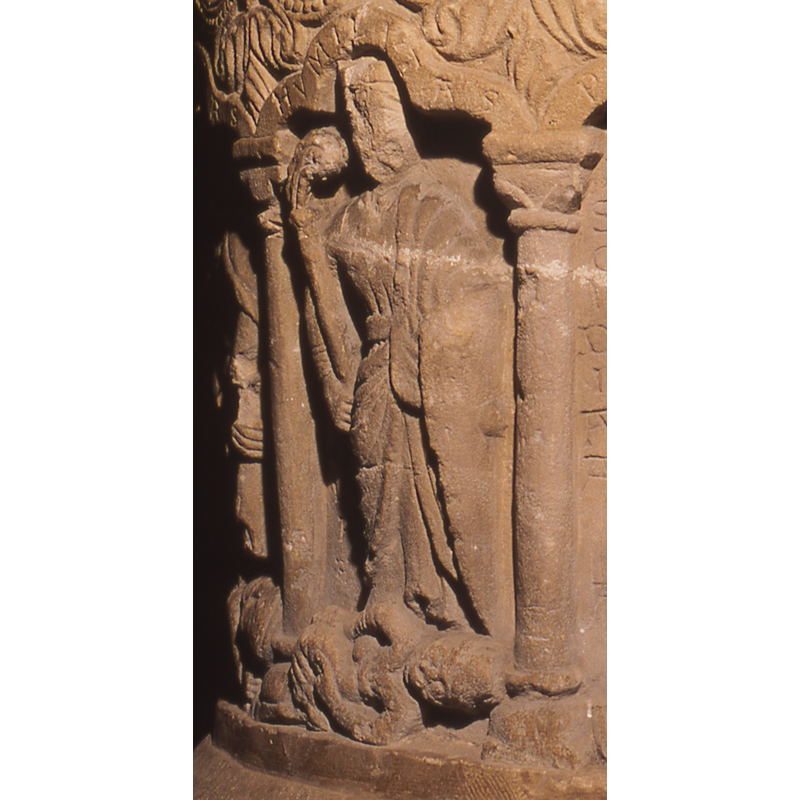
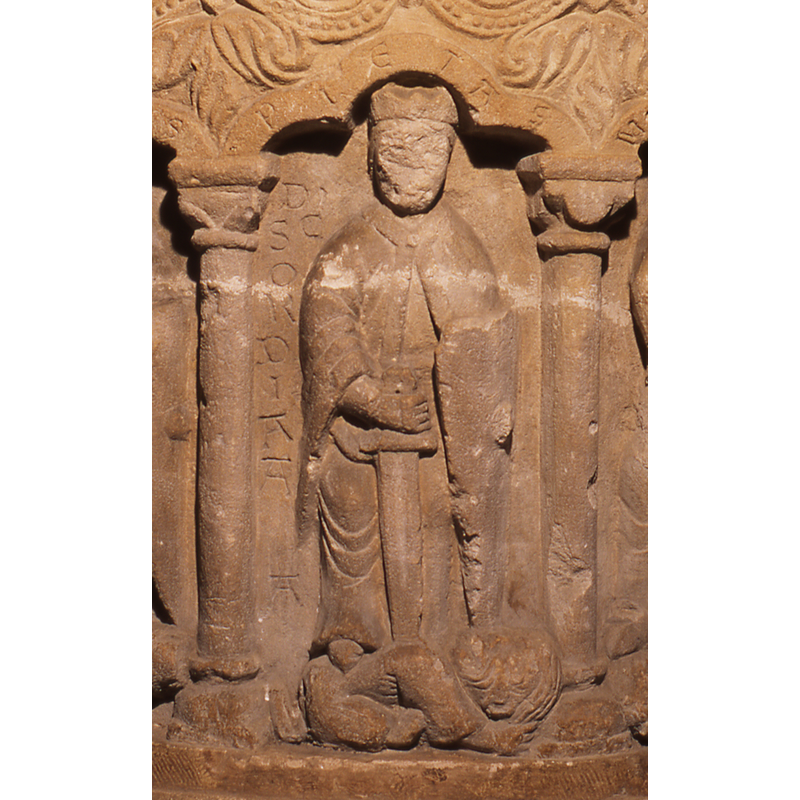
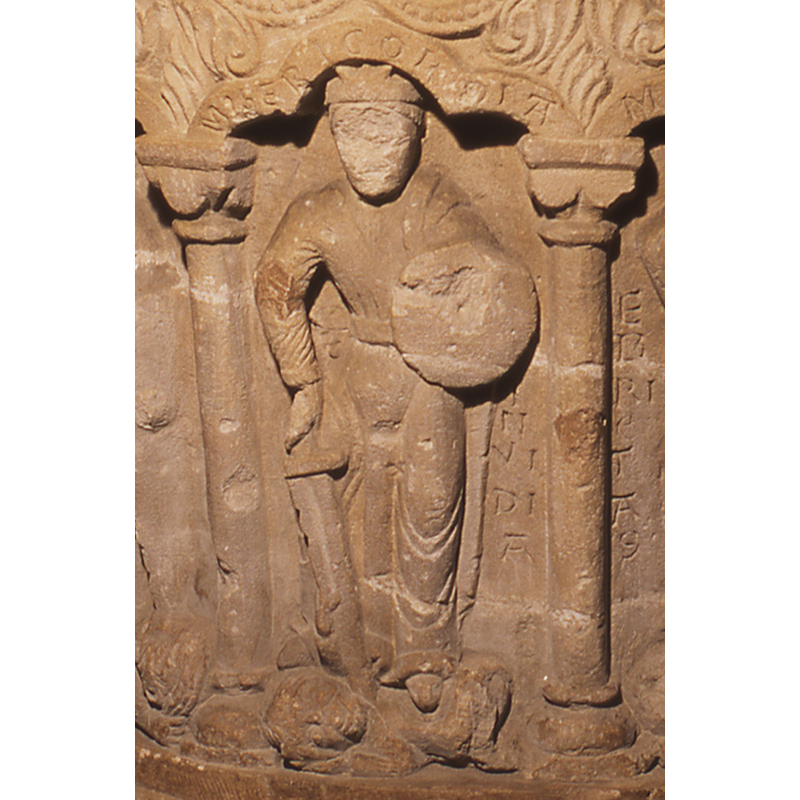
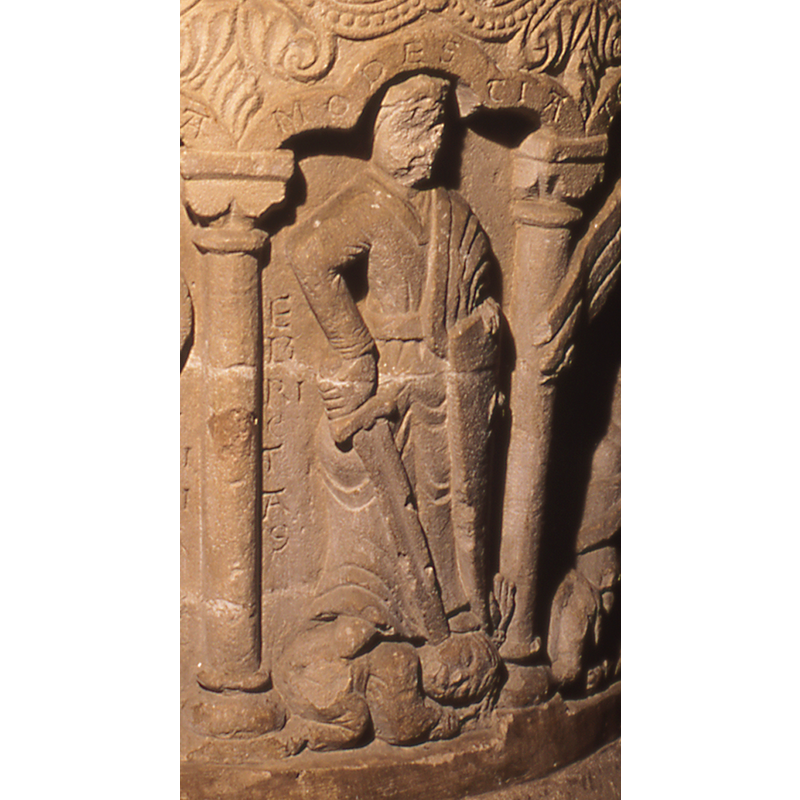
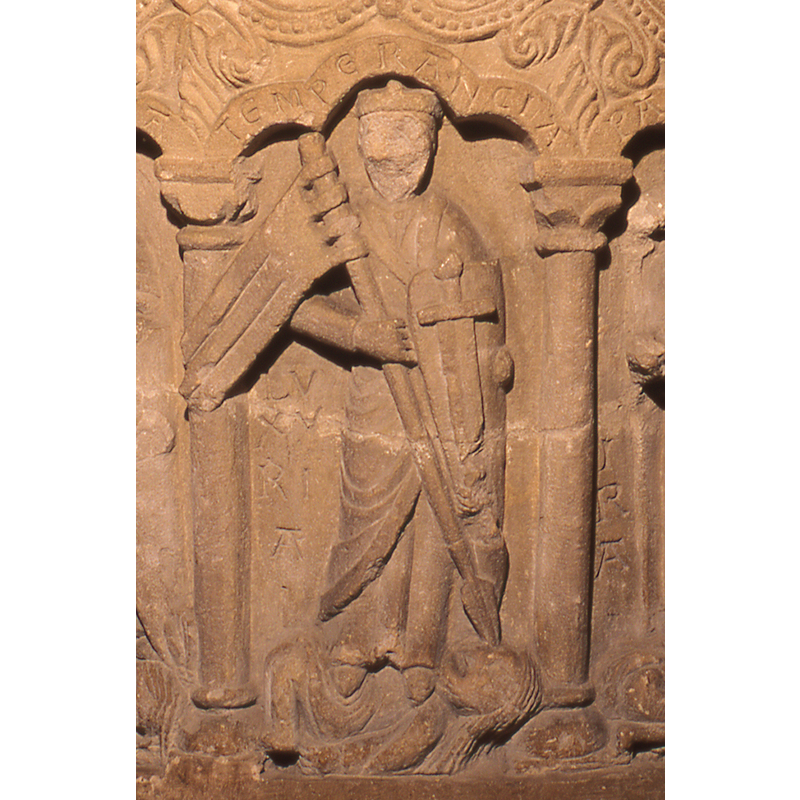
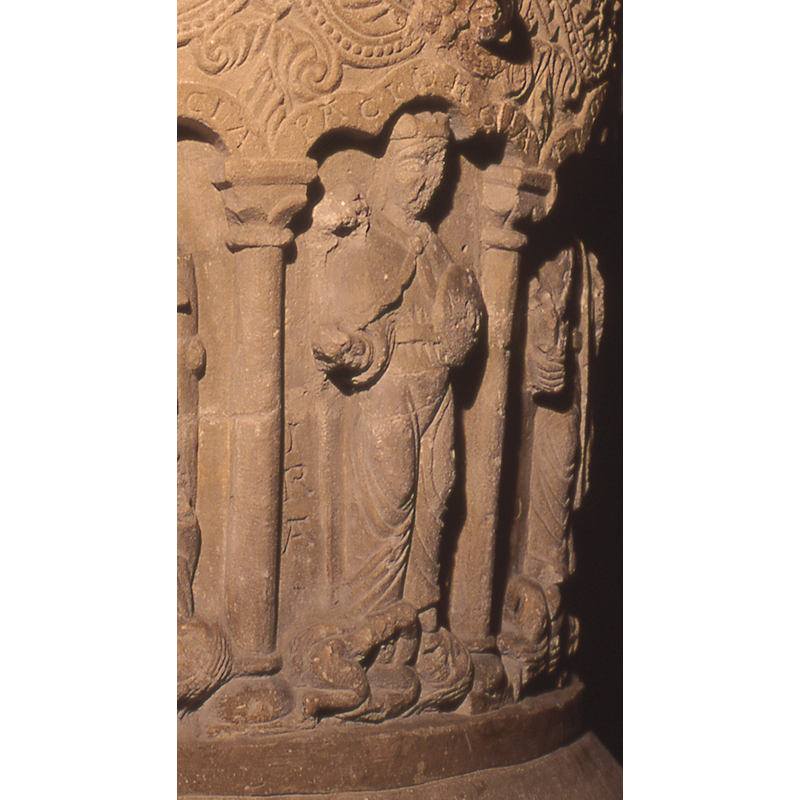
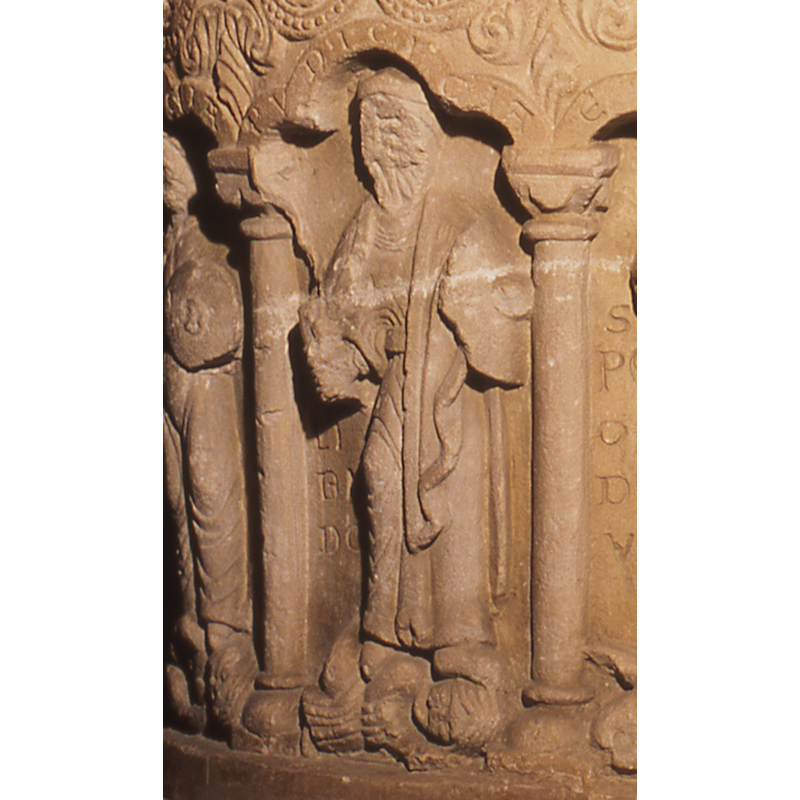
![bears inscription: ECLESIA / SERPEN[s] OCCIDITUR](/static-50478a99ec6f36a15d6234548c59f63da52304e5/compressed/1061119016_compressed.png)
